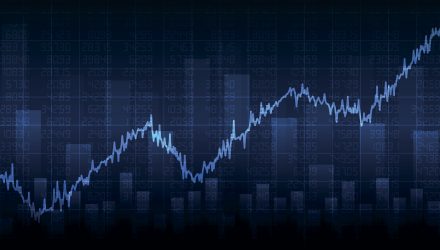Fears of a recession are spurring a movement into safe-haven assets like bonds. Thus far in 2019, close to $120 billion has flowed into exchange-traded funds (ETFs) in the United States–62 percent of which has gone into fixed income funds.
According to David Mann Head of Global ETF Capital Markets at Franklin Templeton, this movement into bonds is not a surprise given the Federal Reserve’s dovish turn in 2019 after four rate hikes in 2018.
“It is impossible to ignore the fact that well over half of the flows in 2019 have gone to fixed income ETFs,” wrote Mann. “With all the attention in 2019 on what the Federal Reserve might do and where interest rates might go, it is no surprise to see so much activity within the fixed income ETF space. What is somewhat new in 2019 is that many investors have realized ETFs are a great vehicle to express those fixed income views.”
When it comes to fixed income allocation, should investors opt for passive index funds or active funds?
“I think it is only a matter of time before all three of these trends collide, and investors start gravitating to both active and smart beta fixed income funds,” added Mann.
In fact, the growth of smart beta funds saw equity inflows equal to 75 percent of that $120 billion that went into funds incorporating these methodologies. Smart beta funds can incorporate a number of strategies in order to achieve returns, including active and passive methodologies. Thus far, the growth of passive funds is outnumbering their active counterparts.
According to the latest Morningstar report for U.S. mutual fund and exchange-traded fund (ETF) fund flows, passive funds notched their best month year-to-date during the month of June with inflows of $69 billion across all category groups. The market share for passive funds now accounts for 40 percent compared to a year ago when it was 37.4 percent.
It’s an uptrend that’s recently hit its stride in just the past five years, according to the report. In the meantime, June wasn’t kind to active funds, which lost $22.5 billion after a volatility-laden May that, in turn, saw a number outflows in passive and active equity funds.
“Passive demand has been growing for years, but as we have noted before, passive flows accelerated significantly five years ago, a that trend has continued,” the report noted. “To a large degree, the past 10 years were a tale of two decades. In the five years following the 2007–09 crisis, passive funds collected an impressive $1.16 trillion”
“Passive flows more than doubled to $2.56 trillion during the past five year,” the report added further. “Yes, they likely benefitted from $956 billion in active-fund outflows. But, even if all those active outflows went to passive vehicles, that still left $1.6 trillion of additional inflows. Neither did that demand come from cash leaving money-market funds, as those vehicles had inflows of nearly $590 billion during the decade’s second half.”
For investors looking to gain fixed income exposure, here are the 10 best-performing bond ETFs year-to-date:
| Symbol | ETF Name | YTD |
| TMF | Direxion Daily 20-Year Treasury Bull 3X | 27.10% |
| UJB | ProShares Ultra High Yield | 19.16% |
| UBT | ProShares Ultra 20+ Year Treasury | 18.10% |
| FCVT | First Trust SSI Strategic Convertible Securities ETF | 16.83% |
| ICVT | iShares Convertible Bond ETF | 16.63% |
| LLQD | iShares 10+ Year Investment Grade Corporate Bond ETF | 16.55% |
| XMPT | VanEck Vectors CEF Municipal Income ETF | 16.12% |
| VCLT | Vanguard Long-Term Corporate Bond ETF | 15.98% |
| TYD | Direxion Daily 7-10 Year Treasury Bull 3X | 15.93% |
| CWB | SPDR Barclays Capital Convertible Bond ETF | 15.79% |
For more trends in fixed income, visit the Fixed Income Channel.

